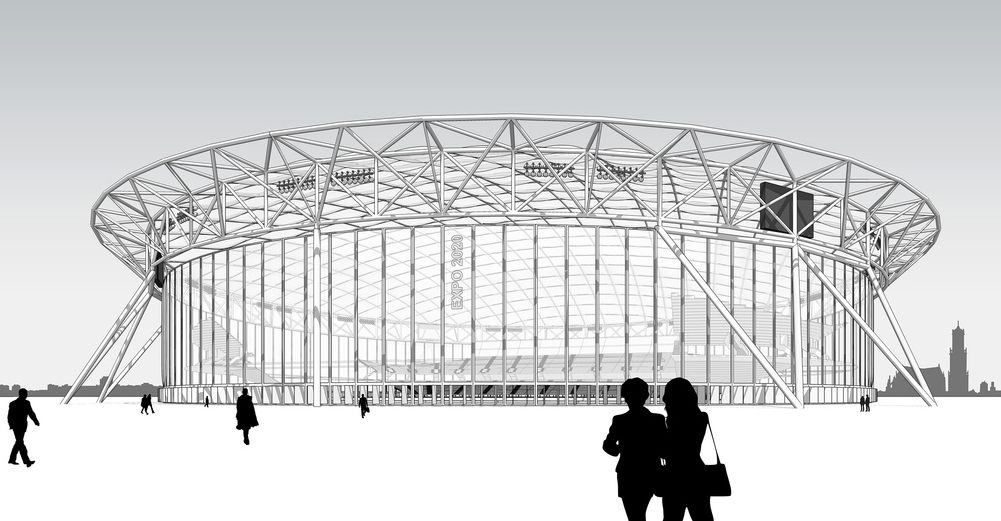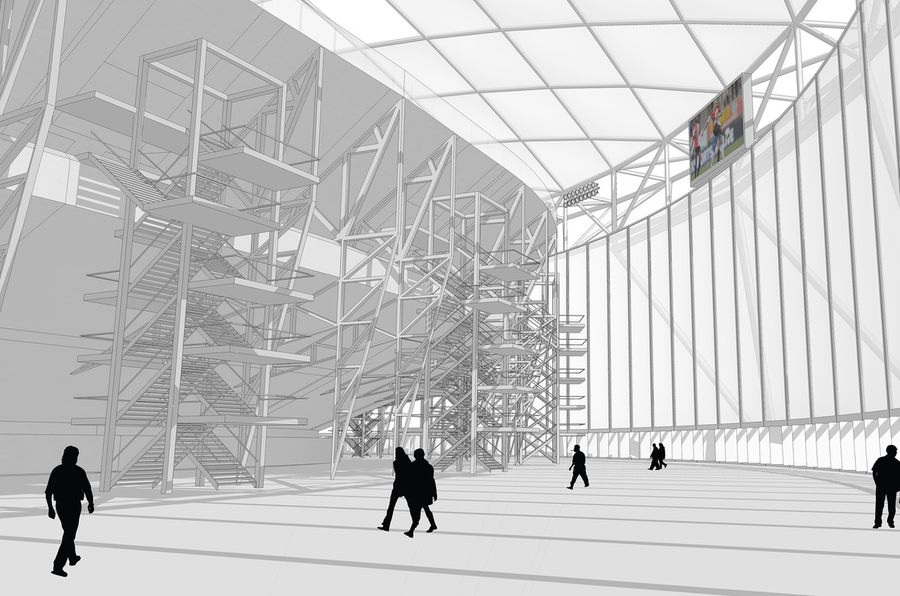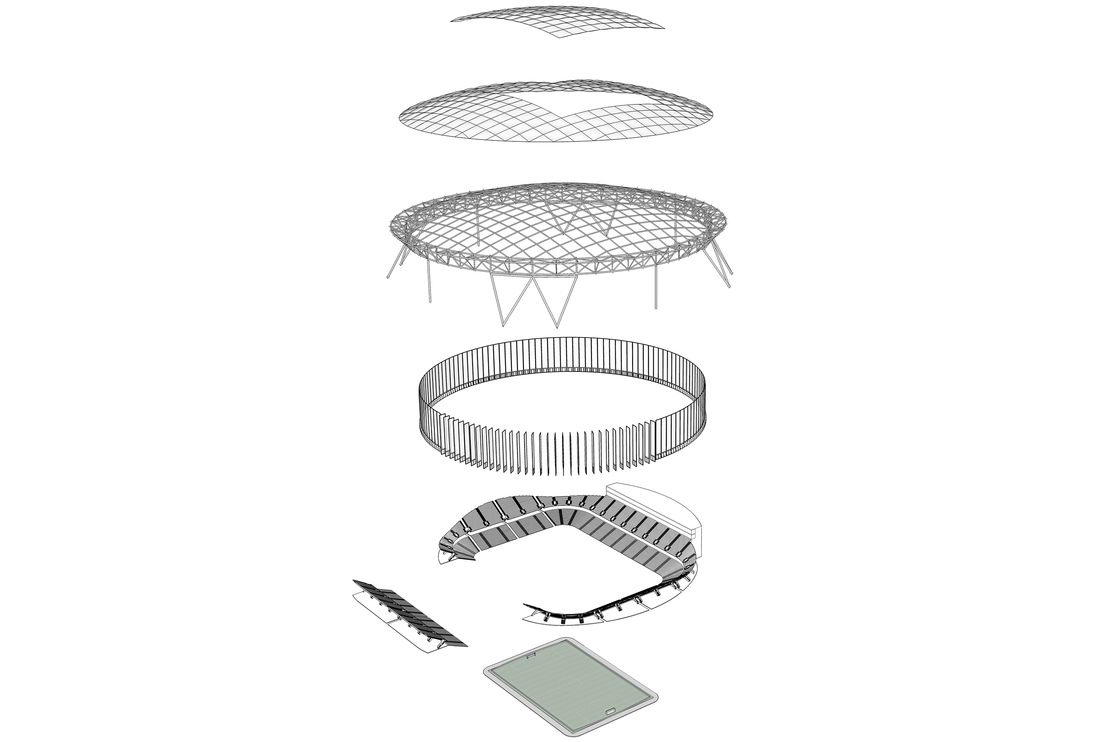Innovation: First the roof, then the stands. It’s cheaper
source: StadiumDB.com; author: michał
 Dutch architects and engineers came up with a new approach to designing stadiums. Much cheaper than the traditional one and more flexible in legacy use. Will we see it happen?
Dutch architects and engineers came up with a new approach to designing stadiums. Much cheaper than the traditional one and more flexible in legacy use. Will we see it happen?
Advertisement
The subject of temporary structures and single-tournament stadiums has already been addressed several times. But to date we haven’t seen a solution that would prove feasible.
London 2012 legacy plan failed miserably and the Olympic Stadium became one more example of poor planning and huge cost overruns. Euro 2008 stadia in Austria see similar problems as their temporary structures are a burden years after the tournament. Now it’s time for Russia and Qatar to show their potential as many stadia will have adjustable capacities.

Well, maybe it’s the entire approach that’s to blame? While a loose one, this conclusion may be drawn from the latest scheme by Dutch companies IMd and Cepezed. Instead of trying to fit temporary facilities into a permanent stadium, they suggest fitting a temporary stadium under permanent roof.

The idea is indeed very simple. First you build a dome and only then begin delivering whatever facilities you need underneath, be it permanent or temporary. Why? Because in traditional projects providing the right cover for planned stands proves very expensive. With their optimized dome form a stadium might be ready faster and cheaper (up to 25%) than a regular structure.
The idea is based on a 200m-diamater dome elevated to the desired venue height. It’s cost- and material-effective, may provide roof for the stands only (outdoor stadium) or full enclosure (indoor arena).
Beneath it one may need whatever is demanded: a stadium up to Continental championship or Champions League size, a hockey arena, an amphitheater or anything else. With the dome standing independently, the facilities underneath are entirely flexible and may change capacity depending on changing demand.
A win-win for investors, taxpayers and tournament organisers? With increasing scrutiny on public spending for large events, we may actually see this or similar efforts in the future and not that we mind.

Advertisement
 StadiumDB
StadiumDB